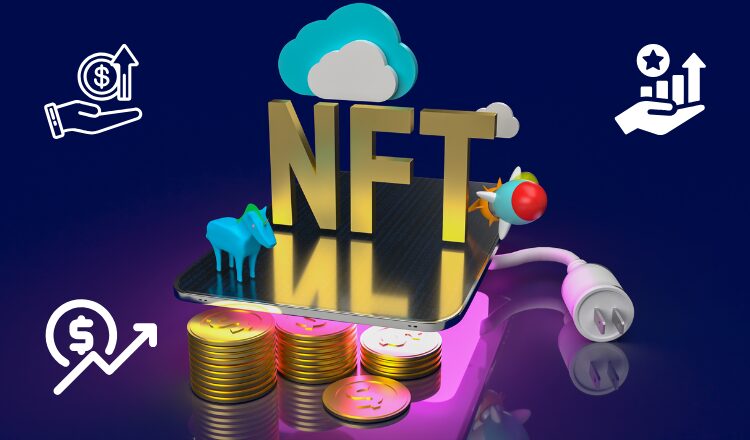How to Identify High-Value NFTs: 5 Tips for New Collectors
As the NFT (non-fungible token) market matures in 2025, knowing how to identify high-value NFTs has become essential for new collectors entering the space. Whether you’re purchasing your first NFT or building a serious portfolio, the ability to spot valuable digital assets can mean the difference between success and loss. This in-depth guide provides five powerful tips for identifying high-value NFTs and navigating the marketplace with confidence.
1. What Defines a High-Value NFT?
High-value NFTs combine digital scarcity, creator credibility, functional utility, and cultural relevance. These assets stand out from the noise by holding long-term appeal—whether through technological innovation, art, or community influence. Collectors should view NFTs like fine art or rare trading cards: not just items, but investments.
2. Tip 1: Evaluate the Rarity and Scarcity
Scarcity drives demand. Always check:
- Edition Size: One-of-one NFTs are generally more valuable.
- Attributes and Traits: Projects like CryptoPunks and Bored Ape Yacht Club are valued by rare traits.
- On-Chain Generation: NFTs that are generated and stored fully on-chain tend to have higher long-term value.
Look for metadata that confirms rarity, and use rarity-ranking tools like Rarity Sniper or Rarity Tools.
3. Tip 2: Research the Artist or Creator
The reputation of the creator is often a leading factor in value. Consider:
- Past Sales Performance: Do they have a history of high sales?
- Social Proof: Are they followed by major collectors or featured in top galleries?
- Innovation: Are they experimenting with AI, generative art, or interactive NFTs?
Platforms like SuperRare and Foundation often showcase elite creators. Follow artist announcements on Twitter and Discord.
4. Tip 3: Analyze Utility and Roadmap
Utility has become a key value driver in 2025. NFTs that offer:
- Access: Tickets to exclusive events, communities, or metaverse spaces
- Staking: Earn rewards or tokens from holding the NFT
- Gaming Utility: Playable assets in NFT-based games like Otherside, Illuvium, or Star Atlas
Also review the roadmap. Projects with long-term development plans—especially those tied to DAOs or revenue-sharing models—tend to appreciate over time.
5. Tip 4: Study the Community and Engagement
A vibrant community is a sign of project health. High-value NFTs are usually backed by:
- Active Discords and Twitter Channels
- Engaged Moderators and Founders
- Fan Content, Memes, and Community Events
Avoid projects with inflated hype and low engagement metrics. Use tools like Dune Analytics and NFT Inspect to gauge real-time social stats.
6. Tip 5: Check Marketplace Metrics and Floor Price
Smart collectors use data. Key indicators include:
- Floor Price Trends: Is the price steadily rising or tanking?
- Volume Traded: High volume = high interest
- Listing Count: Fewer listings often signal scarcity
- Unique Owners: More unique holders suggest less risk of dumps
Check marketplaces like OpenSea, Blur, and LooksRare for verified listings and data. Cross-check with analytics platforms like Nansen and CryptoSlam.
7. Final Thoughts: Navigating the NFT Landscape
In 2025, the NFT market has matured, but it’s still dynamic and volatile. For new collectors, the key is to combine passion with research. The most successful investors understand art, tech, and community. If you’re wondering how to identify high-value NFTs, start by applying these five tips — they’ll sharpen your instincts and help you make smarter decisions in your collecting journey.
8. Frequently Asked Questions (FAQs)
Q1. What are some good platforms to start buying high-value NFTs?
Start with trusted platforms like OpenSea, SuperRare, and Foundation. These have strict vetting processes and showcase high-quality collections.
Q2. Can I use rarity tools for all types of NFTs?
Most rarity tools like Rarity Tools and Rarity Sniper focus on popular collections. They’re best used with collections that have clear trait structures.
Q3. What makes one NFT project more valuable than another?
Factors include creator credibility, community strength, innovation, utility, and scarcity. Projects that consistently deliver on their roadmaps tend to perform better.
Q4. Are NFTs still profitable in 2025?
Yes, but the market is more mature now. The focus has shifted from quick flips to long-term value. Understanding what makes an NFT valuable is key.
Q5. How can I avoid scams when collecting NFTs?
Always verify contract addresses, use hardware wallets, and double-check links. Stick to known platforms and follow official project announcements.
External Resources:
Want to Dive into Other Trending Tech Topics in 2025?
Explore more of our expert-written guides and insights
- 🔗Top 10 NFT Artists of 2025: Ranking the Market Leaders
- 🔗The Best NFT Games of 2025: A Detailed Comparison of Play-to-Earn Games
- 🔗Ethereum vs. Solana NFT in 2025: Which Blockchain Truly Dominates the NFT Space?
- 🔗Full-Stack Blockchain Developer Roadmap 2025: Learn, Build & Deploy
- 🔗Top 10 Blockchain Testnets for Developers in 2025
- 🔗Ethereum vs Bitcoin: Which One is Better for Mining in 2025? (Full Comparison)
- 🔗Top 10 Best AI Code Generators in 2025 That Will Supercharge Your Coding Game
- 🔗Top 10 Best VS Code Extensions for Backend Developers (Node.js Edition)
- 🔗Top 10 AI-Powered VS Code Extensions for Coding in 2025
- 🔗Top 5 Best VS Code Extensions to Use with GitHub Copilot in 2025
- 🔗Top 10 VS Code Shortcuts & Tricks for Full-Stack Devs in 2025
- 🔗Top 10 VS Code Extensions for MERN Stack Developers🔥
- 🔗 Monolithic vs Microservices in 2025: Which Architecture Wins?
- 🔗 Top 5 Terraform Alternatives You Should Know in 2025 (With Pros & Use-Cases)
- 🔗 Kubernetes vs Amazon ECS (Fargate/EC2): Best in 2025?
- 🔗 Kubernetes vs Docker Swarm in 2025: Which One Should You Choose?
- 🔗 Top 10 Must-Have Gadgets Powered by NVIDIA Tech in 2025
- 🔗 GitHub Actions vs. Jenkins for Beginners: What to Use in 2025?
- 🔗 Simplified Microservices Deployment on AWS ECS

